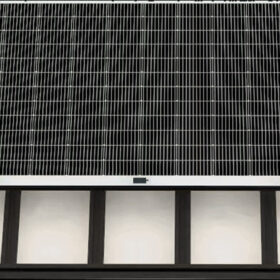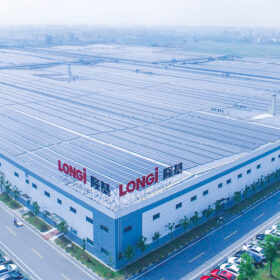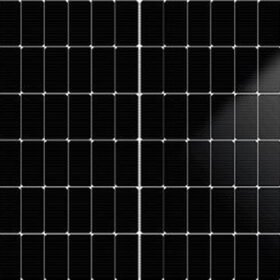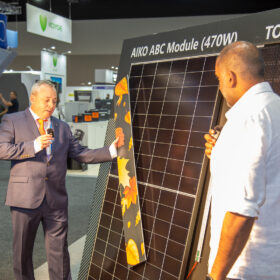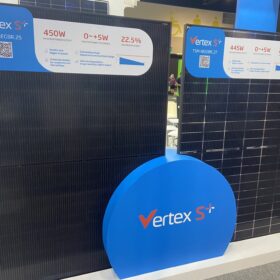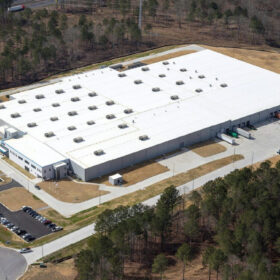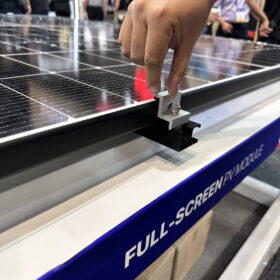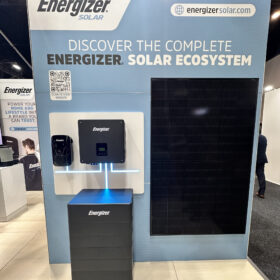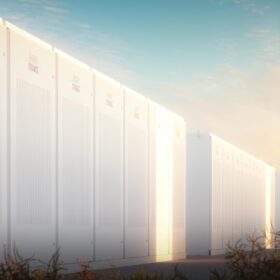Sunman unveils 520 W glass-free solar panel with 19.3% efficiency
The new panel has a white backsheet and a temperature coefficient of -0.34/C. It weighs 4.1 kg per m2 and, according to the manufacturer, supports all types of installation methods, including roof adhesive and removal mechanical mounting.
Longi denies massive layoff plan, says job cuts could reach up to 5%
Chinese solar manufacturer Longi has responded to recent media reports claiming that it might cut 30% of its global workforce.
DAH Solar unveils frameless double-glass TOPCon panels
Chinese manufacturer DAH Solar says its new double-glass panels have a power conversion efficiency of 22.65% and a power output of up to 585 W.
China’s Aiko to deliver 2 GW of All Back Contact modules to Australian shores from March
Chinese manufacturer Aiko showcased its GEN 2 N-type ABC (All Back Contact) modules at last week’s Smart Energy Expo, where the technology’s shade optimisation, enabled by its cells’ bypass diode function, made a splash. Pv magazine spoke to Aiko’s leadership about how its technology works and how the Australian market entrant plans to position itself down under.
Trina presents all-black 450 W solar modules with 22.5% efficiency
Solar technology manufacturer Trina Solar has developed an all-black version of its Vertex S+ solar module range that has a power output of up to 450 W with maximum efficiency of 22.5%.
Perovskite-perovskite-silicon tandem solar cell achieves record-breaking efficiency of 27.1%
Researchers in Singapore have built a triple junction tandem solar cell with an ultrawide-bandgap perovskite absorber integrating cyanate (OCN) ions. The cell surpassed the power conversion efficiencies previously reported for all other perovskite-based triple-junction tandems, as well as single-junction perovskite and silicon solar cells.
Weekend read: Thin prospects
The production of PV ingots and wafers remains the most highly concentrated of all the production stages in the silicon solar supply chain. Yet efforts to re-establish production in Europe and the United States are not for the faint-hearted.
DAH Solar enters Australian market with anti-dust module range
Chinese solar manufacturer DAH Solar has launched into the Australian market with an anti-dust solar module with lowered frames, similar to that displayed by Longi just a few metres away during the Smart Energy Expo.
Energizer Solar’s new hybrid battery & inverter land in Australia, launching its home ‘ecosystem’
Energizer Solar, the licensee for US battery giant Energizer, has selected Australia as the first market to launch its renewable home ‘ecosystem.’ Including new hybrid inverters, a hybrid battery, solar panels, and soon an EV charger, the product suite has been certified and is landing on Australian shores “as we speak,” Gavin Owen, Energizer Solar’s Head of APAC Sales, told pv magazine Australia.
REC launches 430 W heterojunction solar module with 22.2% efficiency
REC has developed a new series of residential heterojunction solar panels with efficiencies ranging from 20.6% to 22.2% and an operating temperature coefficient of -0.24% per degree Celsius.
